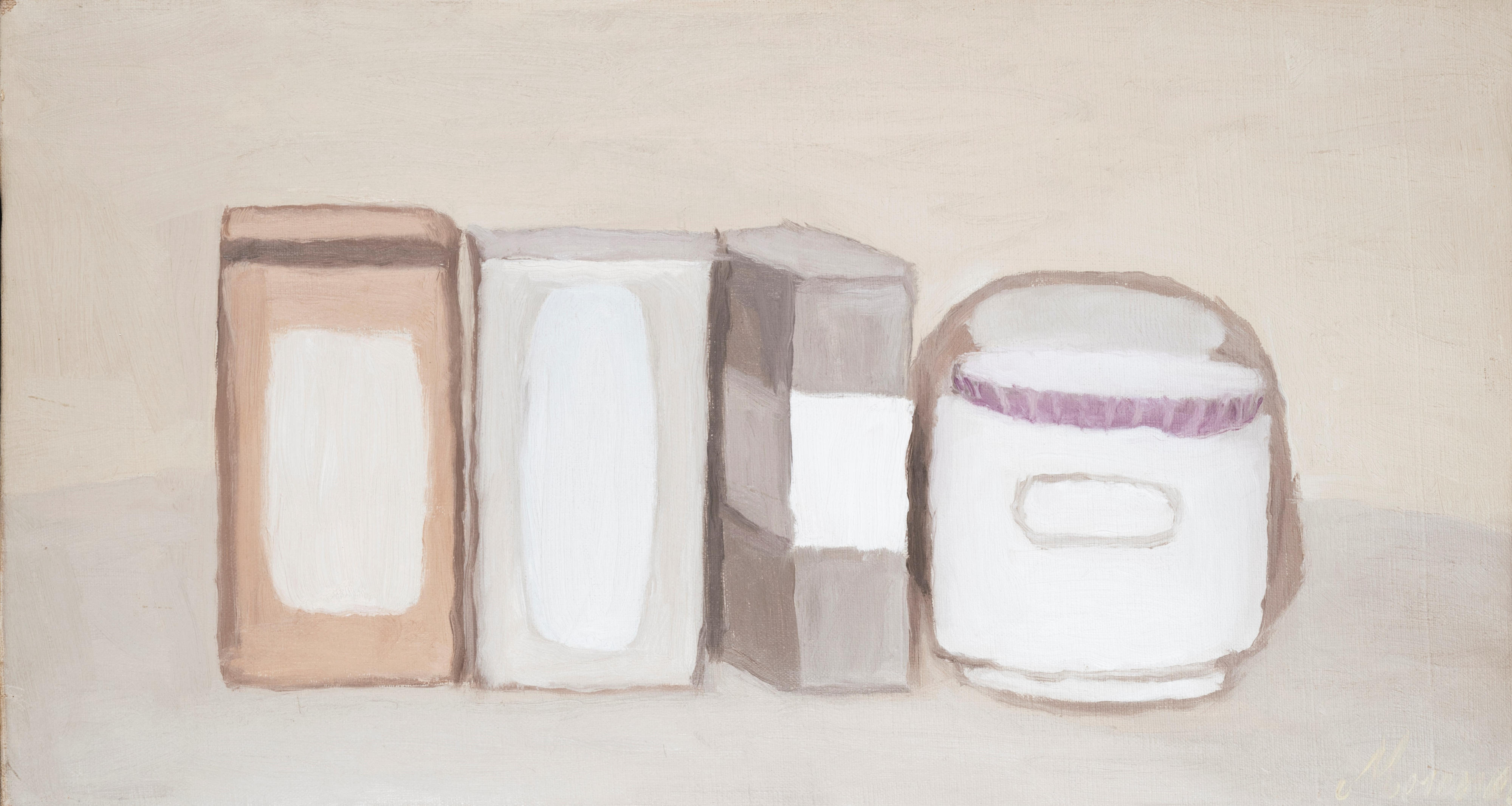Giorgio Morandi
b. 1890, Bologna, Italy
d. 1964, Bologna, Italy
Natura Morta (Still Life)
1946
Oil on canvas
25 x 46.6 cm (9 7/8 x 18 1/4 in.)
Provenance
Galleria del Milione, Milan
E. Savonuzzi, Bologna
W. Macchiati, Milan
Galleria d'Arte Narciso, Turin
Galleria Falsetti, Prato
Galleria d'arte, Prato
Private Collection, Rome
MDG Fine Arts Ltd., London
Private Collection, acquired from the above.
E. Savonuzzi, Bologna
W. Macchiati, Milan
Galleria d'Arte Narciso, Turin
Galleria Falsetti, Prato
Galleria d'arte, Prato
Private Collection, Rome
MDG Fine Arts Ltd., London
Private Collection, acquired from the above.
Literature
Lamberto Vitali, Morandi, Dipinti, catalogo generale, volume primo, 1913/1947, Milan, 1994, no. 505 (illustrated).
Bilbao, Guggenheim Bilbao, A Backward Glance: Giorgio Morandi and the Old Masters, exhibition catalogue, 2019, no. 19, p. 118 (illustrated in colour).
Bilbao, Guggenheim Bilbao, A Backward Glance: Giorgio Morandi and the Old Masters, exhibition catalogue, 2019, no. 19, p. 118 (illustrated in colour).
Description
Giorgio Morandi is one of the most influential painters to have lived in Italy
during the 20th Century. He was born in 1890 in Bologna, where he lived all his life,
sharing a house with his three sisters and painting in his bedroom, surrounded by the
bottles and vases he relentlessly portrayed throughout his entire career. As a young
painter, Morandi experimented with the Italian avant-garde: in the early 1910s he
embraced Futurism, and later became an exponent of Pittura Metafisica, the
influential art movement led by Giorgio de Chirico. From the 1920s onwards,
however, Morandi set out alone to explore the limits of figurative art. He devoted
himself to landscape, flower paintings and still lifes like Natura morta. He always
returned to the same subjects, studying them in infinite variations. In his studio, filled
with dusty bottles and cans, Morandi used to carefully arrange his compositions,
sometimes studying them for a very long time, before starting painting. His art became
an act of meditation on the nature of representation and perception, as well as an
absorbing vision of timeless harmony.
His search for new compositional variations through the precise placement of jugs, bottles and boxes, remained of central importance and he began working groups of objects into compact, often flattened and centralised, formations. This carefully reiterated choreography of objects was central to Morandi’s work. Boxes and vases appear and re-appear throughout the years. The objects were often covered with a layer of dust that shifted and altered, blurring the edges of the objects, removing any labels or distinguishing features that would have attached them to a specific period or distracted from the resoluteness of their forms. As Matthew Gale writes, ‘It had the effect of muting the excesses of transparency and reflection, reducing the glitter typical of academic still lifes to the austere formalism of modernist compositions with their reference to the standardisation of mass production’ (M. Gale, ‘White bottle - red earth’, in Giorgio Moranid, (exh. cat.) Tate Modern, London, 2001, p. 87). Rendered with beautiful simplicity, these ever-changing configurations allowed Morandi to remove the objects from their domestic origins and translate them into examples of pure form.
His search for new compositional variations through the precise placement of jugs, bottles and boxes, remained of central importance and he began working groups of objects into compact, often flattened and centralised, formations. This carefully reiterated choreography of objects was central to Morandi’s work. Boxes and vases appear and re-appear throughout the years. The objects were often covered with a layer of dust that shifted and altered, blurring the edges of the objects, removing any labels or distinguishing features that would have attached them to a specific period or distracted from the resoluteness of their forms. As Matthew Gale writes, ‘It had the effect of muting the excesses of transparency and reflection, reducing the glitter typical of academic still lifes to the austere formalism of modernist compositions with their reference to the standardisation of mass production’ (M. Gale, ‘White bottle - red earth’, in Giorgio Moranid, (exh. cat.) Tate Modern, London, 2001, p. 87). Rendered with beautiful simplicity, these ever-changing configurations allowed Morandi to remove the objects from their domestic origins and translate them into examples of pure form.





